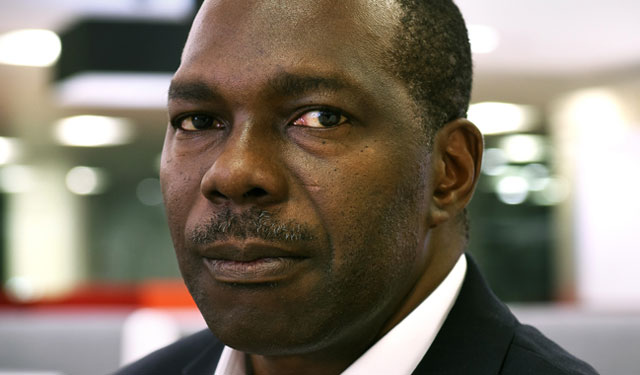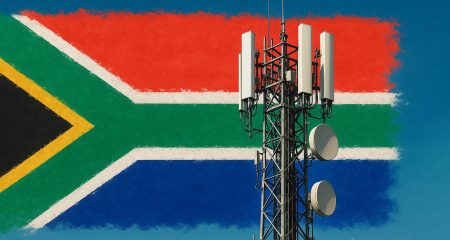
Radio and television broadcasters, satellite providers and even radar operators will have to make way for mobile broadband companies if radio frequency spectrum proposals to be put to the International Telecommunication Union’s World Radiocommunication Conference (WRC) later this year are adopted.
Decisions made at WRC 2015, to be held in Geneva from 2 to 27 November, will have a direct bearing on the future growth of the Internet, especially in emerging markets — and the GSMA, a mobile industry lobby group, is arguing that to cope with the anticipated demand for mobile broadband by 2020, the WRC needs to free up an additional 600MHz for the purpose.
It’s a proposal that is likely to encounter fierce resistance from those that already have access to the spectrum that the mobile industry wants repurposed for broadband.
The GSMA’s director for Africa, Mortimer Hope, says the association is hoping that four new chunks of spectrum will be allocated to mobile broadband at this year’s conference.
The spectrum the GSMA wants reallocated includes the upper end of the UHF band used by TV broadcasters. It also wants the spectrum between 1 350MHz and 1 518MHz, 2,7GHz and 2,9GHz, and a portion of the satellite C-band between 3,4GHz and 4,2GHz repurposed.
The push to open many of these bands is likely to prove contentious, particularly among broadcasters and satellite operators. Hope concedes that satellite providers are already pushing back against the proposal to repurpose the C-band for mobile broadband, but claims the band is not being used fully and that the costs of migrating satellite users within the band is far outweighed by the socioeconomic benefits that will flow from such a decision.
The GSMA published a research study in January that suggests allocating the lower half of C-band spectrum to mobile would lead to 25 times the benefits of the cost of reallocation in the sub-Saharan African region. In South Africa, the benefit was 13 times, the report said.
C-band spectrum is well suited to building mobile broadband networks in dense urban areas and the GSMA wants all the spectrum between 3,4GHz and 3,8GHz in region one (Africa, the Middle East and Europe) reallocated for this purpose.
Hope says demand for C-band satellite services in Africa has reduced significantly in the past 10-15 years as satellite operators moved to higher frequencies such as Ka-band and Ku-band, which require less power, and as fibre and microwave backhaul networks were constructed across the continent, leaving satellite serving more of a backup role than as a primary communications method.
Also, satellite communication has become more “spectrally efficient”, says Hope, meaning less spectrum is needed to carry the same volume of data.
If half the band is reallocated to mobile broadband, satellite providers will need to install filters on customers’ equipment to restrict the spectrum they utilise, he says.
In the television broadcasting bands, the GSMA is also keen for access to spectrum between 470MHz and 694MHz. Like spectrum in the digital dividend bands of 700MHz and 800MHz, which has already been identified for mobile broadband, UHF spectrum is well suited to building networks with wide coverage, lowering network build costs, and allowing operators to bring broadband to more rural parts of Africa for the first time.
Although digital terrestrial television is much more efficient than analogue broadcasts, the GSMA’s proposals are likely to encounter fierce resistance from broadcasters keen to expand their terrestrial channel bouquets. Hope says that “realistically”, the GSMA is hoping to get access to the upper part of the band adjacent 700MHz.
The third band the GSMA hopes to reallocate, between 1 350MHz and 1 518MHz is used for radar and for digital audio broadcasting, which Hope says “never took off”. With digital terrestrial television, “you don’t need a separate audio broadcast channel”, he argues, and so this spectrum should be reallocated to mobile broadband.
The 2,7GHz to 2,9GHz band is typically used for radar and air navigation systems, says Hope. “It’s not heavily used in Africa. Some countries have one or two radar stations — that is it. It wouldn’t be difficult to install filters to limit their range of operation.”
Like C-band spectrum, this spectrum is well suited for urban rather than rural applications because of the propagation characteristics of signals using this band.
Before the WRC in November, there will be intense lobbying and debate at both a country and regional level, with a Southern African Development Community preparatory meeting scheduled for later this month in Johannesburg.
Despite this preparation, debate in Geneva is likely to be robust. “At the end, it’s a good outcome if everyone leaves equally unhappy,” says Hope. “If you have one party that is happy and one that is unhappy, that is a bad outcome.” — (c) 2015 NewsCentral Media




